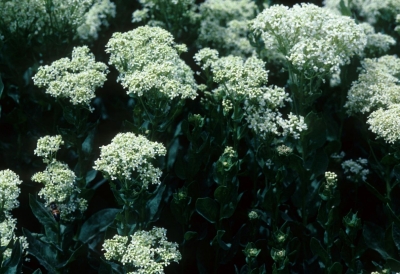Hoary Cress Noxious Weed Treatment
Hoary Cress Reproduction
Hoary cress can be a very expensive weed. It reproduces both via seed and root runners and is known to slowly but surely take over land where wheat is planted. Costly hoary cress noxious weed treatment and a fallow period for the treated land is often required. Even if crops aren’t part of the property where the noxious weed is growing, property values can be impacted and the sooner it’s eliminated, the better.

Hoary Cress Noxious Weed Treatment Options
What Colorado State University refers to as “persistent digging” can possibly eradicate small infestation of the noxious weed. However, because the plant reproduces by both seed and root runners, it’s imperative to dig deeply enough to remove every trace of root, which typically run 29”-32” below the surface (although a 30 foot root was recorded in 1996).
Chemical treatment is the most recommend hoary cress noxious weed treatment.. A variety of herbicides can be applied during specific growth stages to weaken the plant and disrupt its growth cycle. Depending on the size and location of an infestation multiple applications of more than one herbicide may be recommended. Due to potential chemical interactions, professional control of this weed is frequently recommended.
Think you might have hoary cress on your property? Contact SprayTech, Colorado noxious weed specialists, at 720-248-0000 to discuss hoary cress noxious weed treatment options.


Comments are closed.